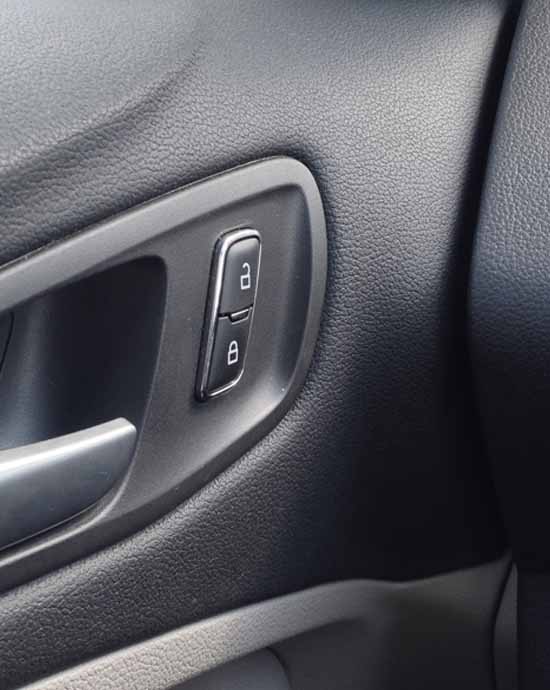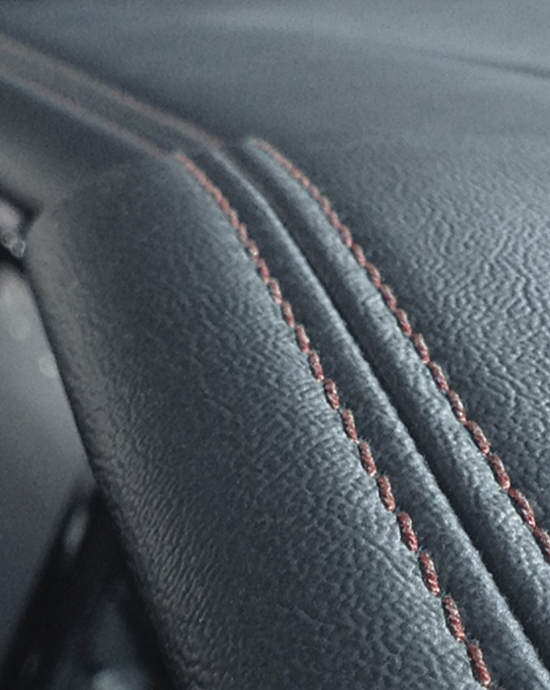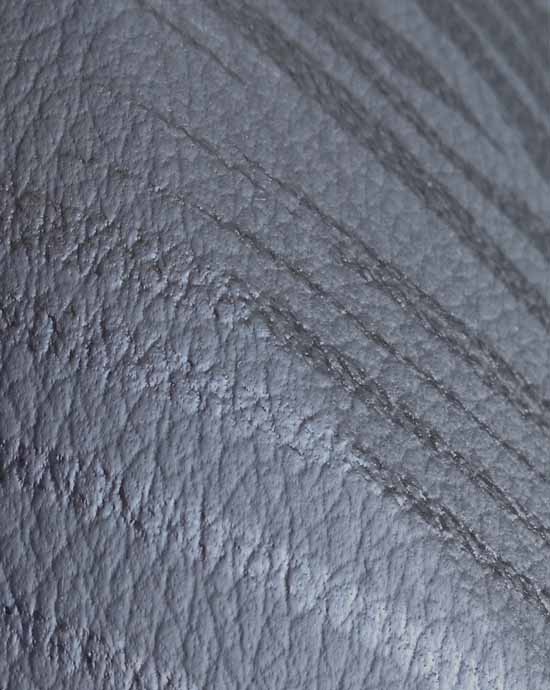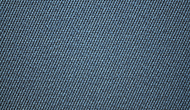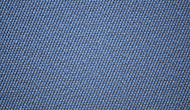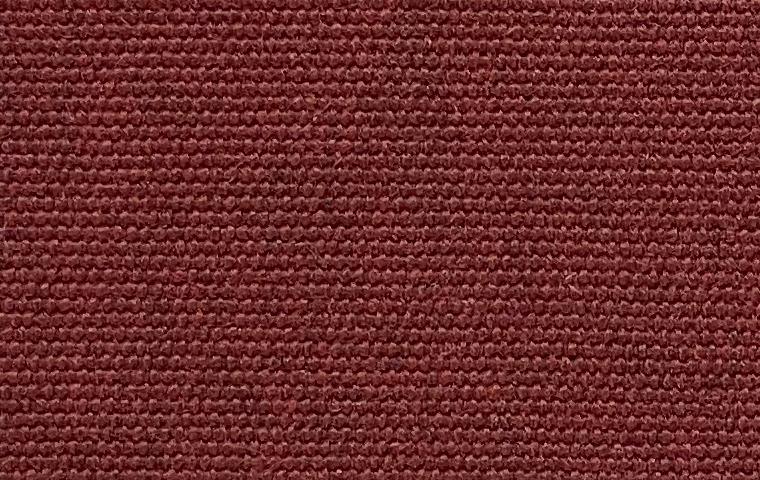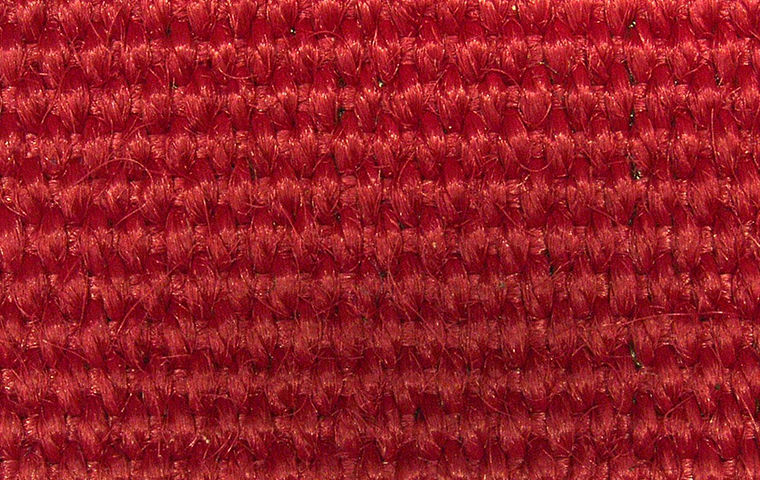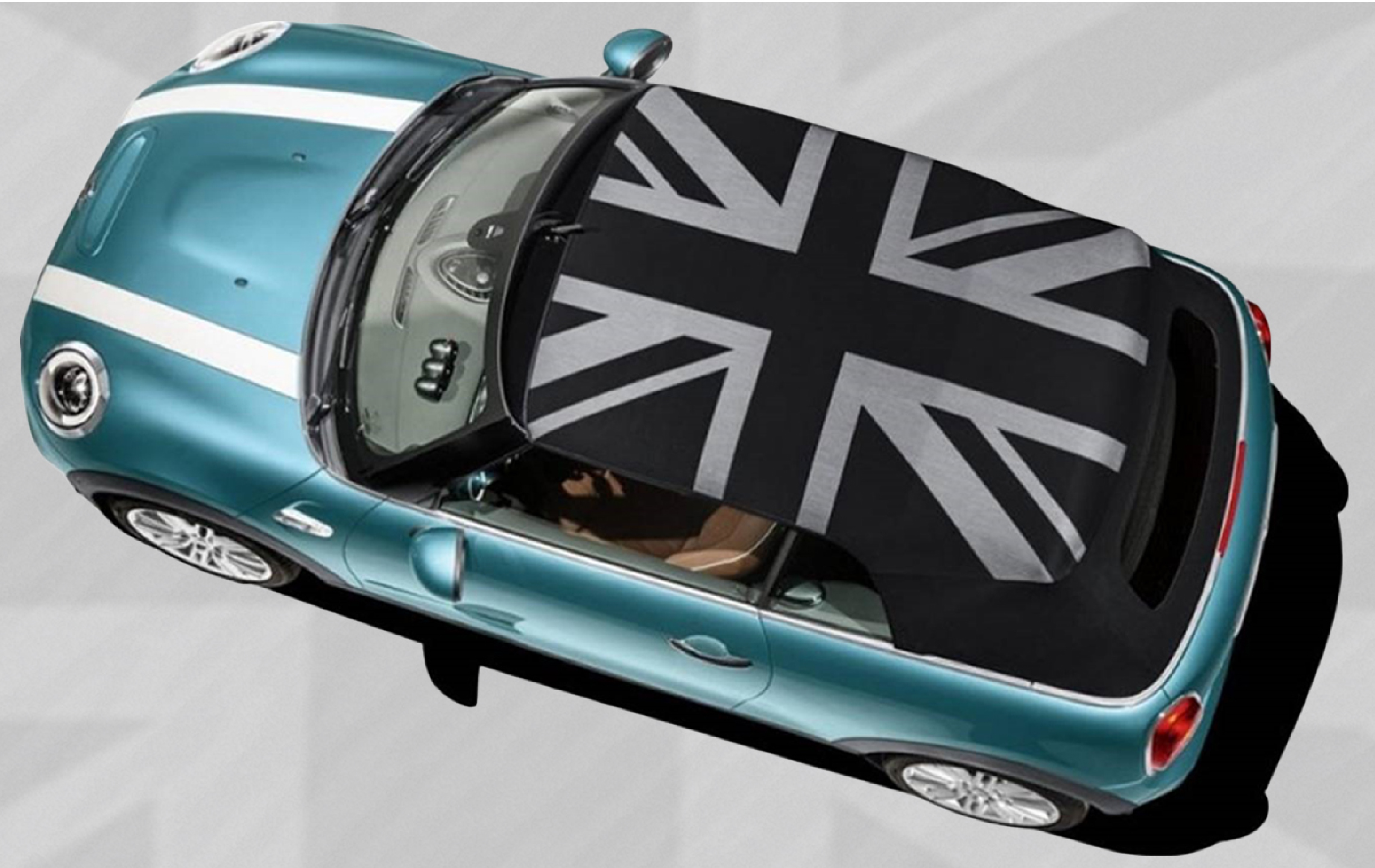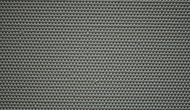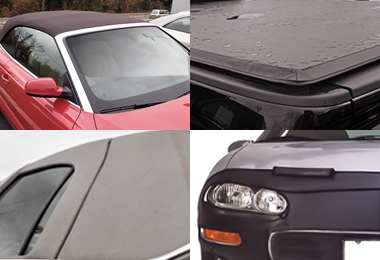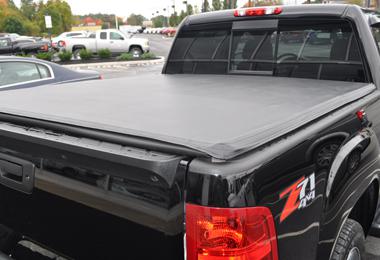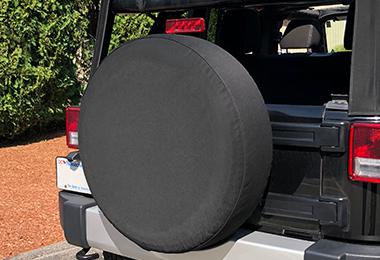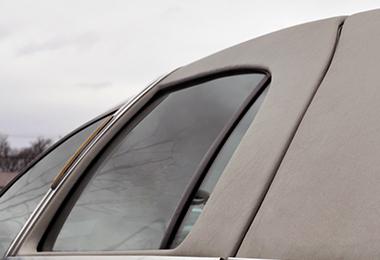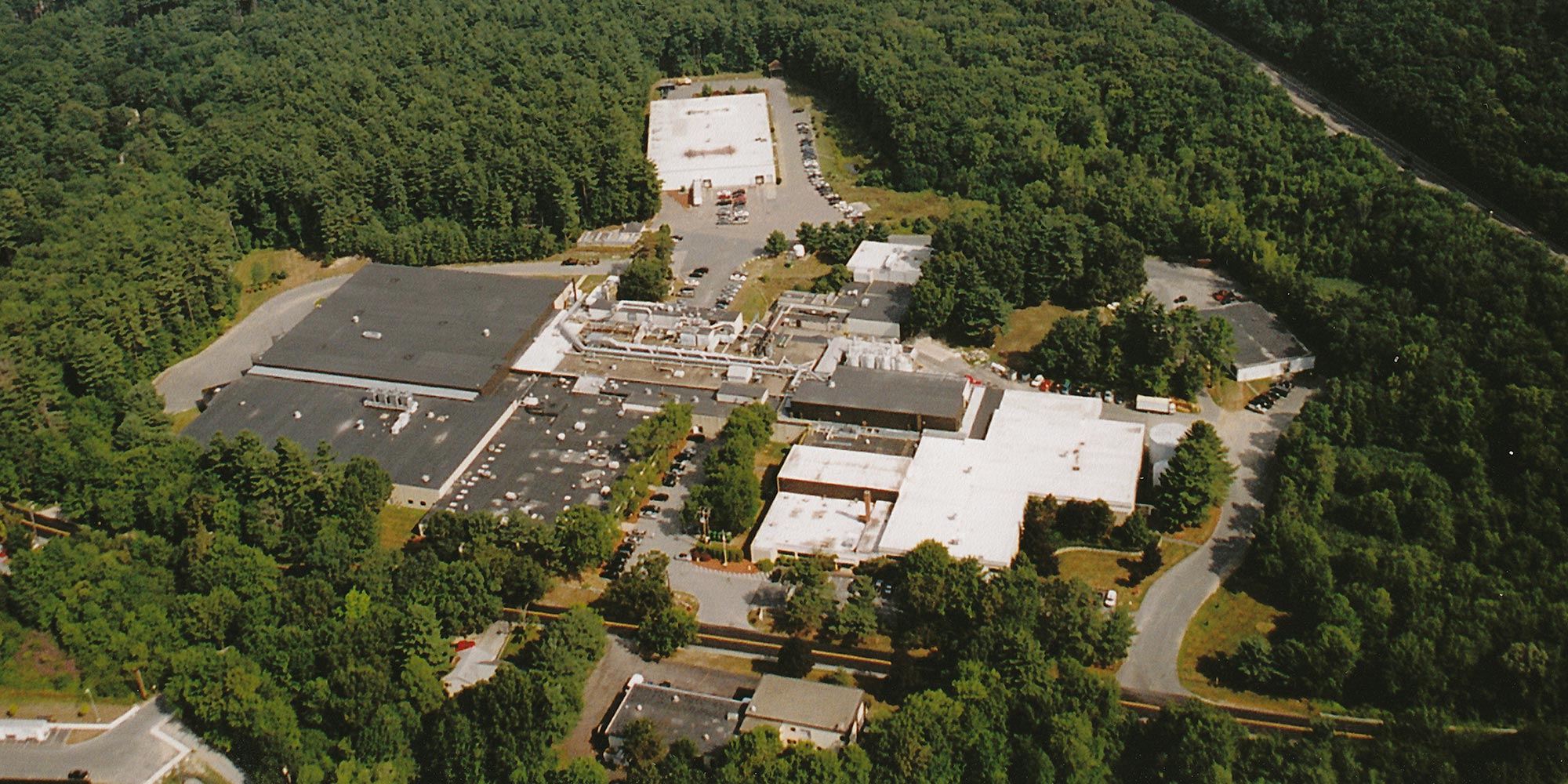VINTAGE TOP MATERIALS
General Terms and Types
Most automotive top materials over the years have been coated fabrics of several basic types. Their waterproof nature, performance characteristics and even cost have usually proved superior to all other options for soft top material on open and convertible bodied cars. The coated materials have been of four basic constructions:
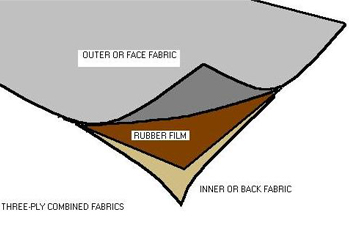
|
1) THREE-PLY CLOTH - two layers of cloth with an intervening film of rubber (or other elastomer (Figure 1). The exterior (or facing) fabric has usually been selected for good weatherability. The interior (or lining) fabric provides additional strength, as well as style in many cases. This construction has been referred to as “cloth” or “canvas” top material, “mackintosh”, “rubber-coated fabric” and “three-ply material”. |
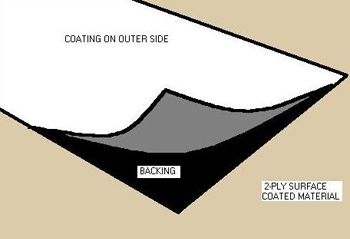 |
2) SURFACE-COATED, TWO-PLY - a fabric coated on the exterior, or face side. The coating usually has a pattern embossed on the visible surface for decorative purpose. The cloth is the lining or backing, providing the substrate on which the coating is applied (Figure 2). In the coated fabrics trade, this is known as a “single texture” material. |
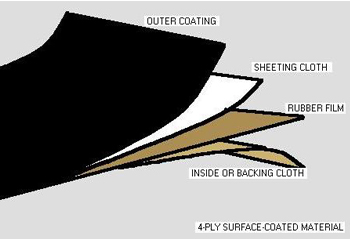 |
3) SURFACE-COATED, FOUR-PLY - a four layer construction consisting of the following from exterior (face) to interior (lining) (Figure 3):
Known in the trade as “Double Texture”, this construction has traditionally been the longest lasting and most robust surface-coated top material. Some users have noted that double texture’s extra layers of cloth and rubber impart better sound deadening (for convertibles) than single texture material and modern acoustical tests on soft tops confirm this point.
|
4) DOUBLE-COATED FABRIC - a fabric coated on both the outside and inside. This construction has seen relatively little use for top material beyond applications for fairly modern four-wheel-drive, sport utility vehicles and for truck tarpaulins.
While these coated fabrics satisfied most of the demand for automobile top materials over time, some alternatives should be noted. Car, truck and custom body companies used these other materials for relatively specialized situations. Cost or performance characteristics limited their use.
Leather, probably one of the very first top materials, saw widespread use through 1905, but limited use after that. The later use was most prevalent on town cars and others with limited production or custom bodies of formal and ornate style, even through the 1930s. Leather had a natural appeal, but was maintenance-intensive and heavy when soaked.
Cotton canvas, in an uncoated, heavy duck weave has endured in automotive use. Khaki cloth, based on military fabrics of around 1900, was a popular material for folding tops through about 1908. Later use diminished, but the prominent Burbank brand enjoyed good use into the 1930s. Some, like Burbank, were made up with a heavy and tight weave, and water repellant in their own right. Other canvas materials had been impregnated with a wax-based material. Builders of military and agricultural vehicles continued to use this kind of material until recent times.
Oilcloth, a cotton fabric (usually duck weave) impregnated with a linseed-oil compound, was used for some rigid tops on utility and commercial vehicles into the 1930s, as well as for side curtains on open-bodies buses and commercial vehicles. Oilcloth remained reasonably water repellant if fixed in place on a rigid canopy top, or was rolled up, as used with side curtains. It did not do so well on folding tops, so its use there is rare and specialized.
Cotton enameling duck was also used in the fabrication of rigid tops on early closed bodied cars and on commercial vehicles. After trimming this cloth onto the top, a builder painted it, usually conforming to the paintwork on the rest of the body. The use of enameling duck on vehicle tops essentially vanished after the 1930s.


